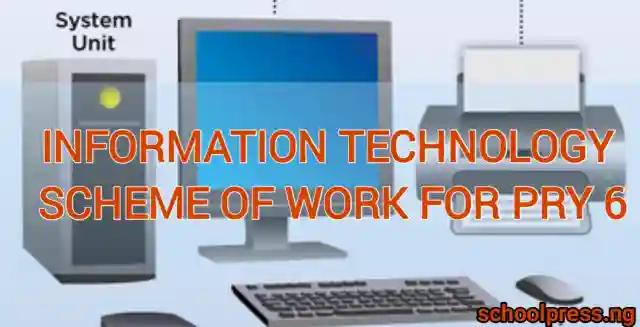Basic Science is an important subject for Primary 1 where students are introduced to the world of science and relevant scientific skills and attitudes to prepare them for future learning in science.
The Basic Science scheme of work for primary 1 examines aspects of the subject to ensure a fair understanding, including the environment, living and non-living things, the human body, health and hygiene. Herein, the environment is looked at in terms of land, water, and air and their effects on living and non-living things.
Additionally, living and non-living things are looked at based on their characteristics and differentiation as well as their need-based classification. The human body is broken into the head, trunk, limbs, organs, and 5 senses . Finally, health and hygiene are covered.
Table of Contents
Objectives of Basic Science scheme of work for Primary 1
First Term Objectives
Week 1-2: Observe and identify things in and around the classroom, school and home
Week 3: Identify types of roads around the school and roads outside the school
Week 4: Demonstrate walking along the road and crossing the road safely
Week 5: Identify other parts of their surroundings -Soil, air and water
Week 6: Demonstrate that air exists and Create air current by blowing with the mouth or using a paper fan.
Week 8: Demonstrate that air occupies space using balloons
Week 9-10: List the common sources of water
Second Term Objectives
Week 2-3: Identify different colours and Collect materials of different colours
Week 4: Observe road traffic lights and identify their colours
Week 5-6: State the function of each road traffic light sign.
Week 8-9: Identify road markings and their colours
Third Term Objectives
Week 2-3: Identify yourself as a living thing and Identify other living things in the classroom and school environment
Week 4-5: Identify other living things at home
Week 6: identify non-living things in the classroom
Week 8-10: identify non-living things in the school and at home
Read More: 2024 JAMB UTME Form: Know The Important Information For The Exam Registration
Learning Outcomes of Basic Science scheme of work for Primary 1
First-Term Learning Outcomes
Week 1-2: Identify things in and around the classroom, school and home and Sketch any two things identified in and around the classroom, school and home
Week 3: Identify different types of roads
Week 4: Demonstrate how to walk and cross a road safely
Week 5: Identify other parts of their surroundings
Week 6: Show that Air exists
Week 8: Demonstrate that air occupies space
Week 9-10: Name five common sources of water
Second Term Learning Outcomes
Week 2-3: Pupils to identify five colours
Week 4: Identify various road traffic light by the colours
Week 5-6: Identify various road traffic lights by their colours and functions
Week 8-9: Identify some road traffic markings and their colours
Third Term Learning Outcomes
Week 2-3: Identify self as living things and Identify at least two living things outside their classroom
Week 4-5: Identify at least five living things in the home
Week 6: Identify three non-living things in the classroom
Week 8-10: Identify five non¬living things around the school and in the home
Read More On Primary 1 Scheme of Work
Islamic Religious Studies Scheme of Work for Primary 1
Cultural and Creative Arts Scheme of Work for Primary 1
Basic Technology Scheme of Work for Primary 1
Physical Health Education Scheme of Work For Primary 1
Information Technology Scheme of Work For Primary 1
Mathematics scheme of work for Primary 1
History Scheme Of Work for Primary 1
Christian Religious Studies Scheme of Work for Primary 1
Civic Education Scheme of Work for Primary 1
Social Studies Scheme of Work for Primary 1
First Term Basic Science Scheme of Work For Primary 1
| WEEK | TOPIC | PERFORMANCE OBJECTIVES | Contents | |
| 1 – 2 | Exploring your Environment | Pupils should be able to: (1) Observe and identify things in and around the classroom, school and home | Things in and around the classroom, school and home | |
| 3 | Exploring your Environment | (2) Identify types of roads around the school and roads outside the school | Types of roads within and outside the school | |
| 4 | Exploring your Environment | (3) Demonstrate walking along the road and crossing the road safely | Walking along the road and crossing the road | |
| 5 | Soil, Air and Water | Pupils should be able to: (1) Identify other parts of their surroundings -Soil, air and water | Other parts of the surrounding (e.g soil, water and air) -Soil | |
| 6 | Soil, Air and Water | (1) Demonstrate that air exists | Air | |
| (2) Create air current by blowing with the mouth or using paper fan. | ||||
| 7 | Mid Term Test | |||
| 8 | Soil, Air and Water | Pupils should be able to: Demonstrate that air occupies space using balloons | Air | |
| 9 – 10 | Soil, Air and Water | List the common sources of water | Water | |
| 11 | Revision | |||
| 12 – 13 | Examination |
Read More: Best Easy way to Upload O Level Results on JAMB Portal in 5 Minutes or Less In 2024
Second Term Basic Science Scheme of Work For Primary 1
| WEEK | TOPIC | PERFORMANCE OBJECTIVES | Contents | |
| 1 | SUMMARY AND REVISION OF FIRST TERM’S WORK | |||
| 2-3 | Colour (Identification) | Pupils should be able to: Identify different coloursCollect materials of different colours | Colours of objects | |
| 4 | Colour (Identification) | (3) Observe road traffic light and identify their colours | Road traffic light signs | |
| 5 – 6 | Colour (Identification) | (4) State the function of each road traffic light signs | Functions of road traffic light signs | |
| 7 | MID – TERM TEST | |||
| 8 – 9 | Colour (Identification) | (5) Identify road markings and their colours | Road Markings | |
| 10-11 | Summary and Revision | |||
| 12-13 | Examination | |||
Third Term Basic Science Scheme of Work For Primary 1
| WEEK | TOPIC | PERFORMANCE OBJECTIVES | CONTENTS | ||
| 1 | SUMMARY AND REVISION OF SECOND TERM’S WORK | ||||
| 2 – 3 | Living Things | Pupils should be able to: Identify self as a living thingIdentify other living things in the classroom and school environment | Living Things in the school environment. | ||
| 4-5 | Living Things | Identify other living things at home | Living Things in the home | ||
| 6 | Non-Living Things | Pupils should be able to identify non-living things in the classroom | Non-living things in the classroom | ||
| 7 | MID – TERM TEST | ||||
| 8-9 | Non-Living Things | Pupils should be able to identify non-living things in the school and at home | (1) Non-living things in the school (2) Non-living things at home | ||
| 10-11 | Summary & Revision | ||||
| 12-13 | |||||
Read More: Basic Technology Scheme of Work for Primary 1
Teacher’s and Pupils Activities
First Term Teacher’s and Pupil’s Activities
Week 1-2: The teacher should Takes pupils on a study walk around and outside the school. Encourages pupils to observe and list things in the home. The Pupils should observe and list things in the school environment.
Week 3: The teacher should Guides pupils to mention types of roads. The pupils should list types of roads
Week 4: The teacher should Demonstrate walking safely along the road and crossing the road. The pupils should Demonstrate working safely along the road
Week 5: The teacher should Guides pupils to identify soil, air and water as other components of the surrounding. The pupils should Touch and feel soil in the playground
Week 6: The teacher should Demonstrates the existence of air using paper or hand fan.. The pupils should Create air currents by blowing with the mouth or using hand or paper fan
Week 8: The teacher should Demonstrates that air occupies space by inflating balloons. The pupils should Inflate balloons polythene bags, Nylon etc.
Week 9-10: The teacher should Takes pupils on a tour of nearby water sources. The pupils should Mention sources of water and Recite a poem about water
Week : The teacher should . The pupils should
Second Term Teacher’s and Pupil’s Activities
Week 2-3: The teacher should Use the Colour chart is guide pupils to identify colours, Give pupils different materials to identify different colours. and Separates colours using “lego” materials with different colours for modelling.
The Pupils should Identify colours of objects provided by the teacher
Week 4: The teacher should Draw road traffic signs for pupils to observe. The pupils should Observe road traffic light signs
Week 5-6: The teacher should Takes pupils to observe various road traffic signs in their location and Draw and match the functions of road traffic signs. The pupils should Watch the road traffic light signs as its changes and the movement of the vehicles and Match the colours of road traffic light with their functions
Week 8-9: The teacher should Supervises pupils in drawing and painting of road traffic signs. The pupils should Draw and painting of road traffic signs e.g Zebra crossing.
Third Term Teacher’s and Pupil’s Activities
Week 2-3: The teacher should Use pictures and charts to guide pupils to identify living things in the classroom and school environment and Guide pupils to explore the school surroundings identifying living things themselves
The Pupils should Identify from pictures and charts living things, Identify self as a living thing and Identify other things at school
Week 4-5: The teacher should Use Pictures and charts to guide pupils to identify living things at home. The pupils should Identify other things as living things in the home
Week 6: The teacher should Use pictures and charts to identify how non-living things in the classroom and Guide them to identify non-living things in the classroom. The pupils should Identify from pictures and charts non-living things and Identify non-living things in the classroom
Week 8-9: The teacher should Uses pictures and charts to identify non-living things in the school and at home and Guide them to identify non-living things in the school environment. The pupils should Identify non-living things from the pictures, Identify non-living thing in the school compound and Identify air, soil and water as non-living things.
Read More: Information Technology Scheme of Work For Primary 1






